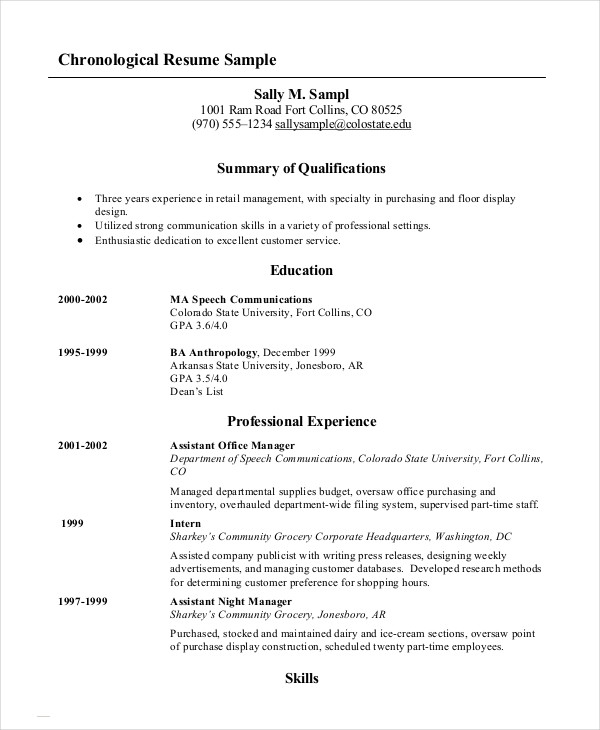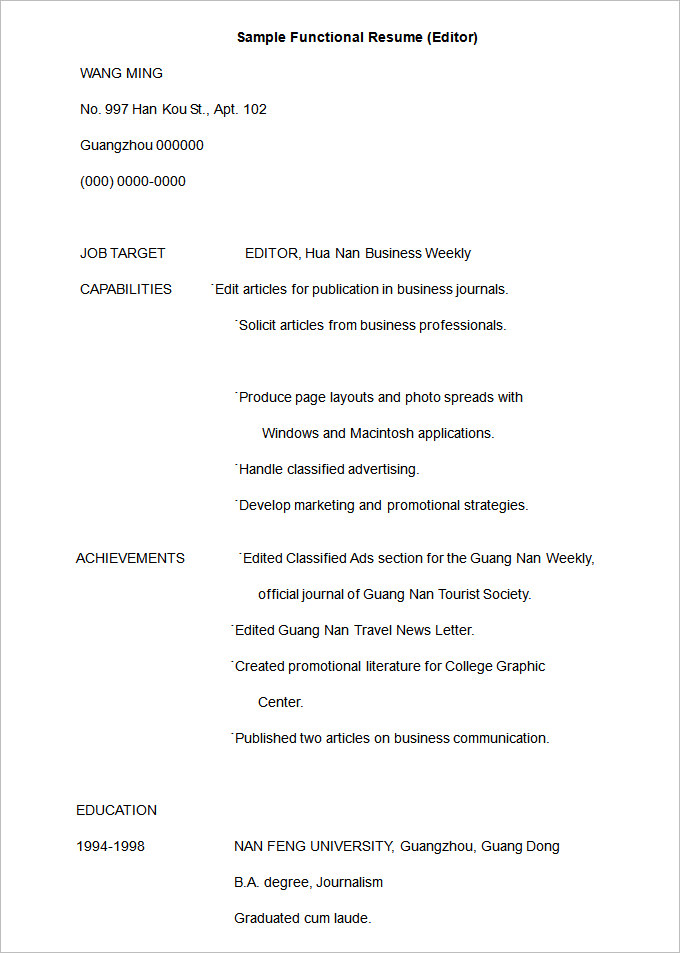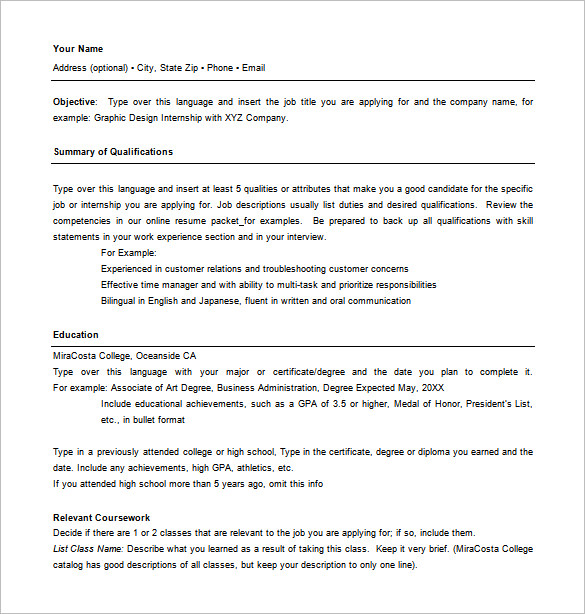Different Types of Resume Formats with Examples

A resume is an important piece of a document where we present our background, skills and achievements. This document plays an essential role in deciding whether we are fit for a particular job role or not. Resume writing is an important task in your hunt for new employment and should be done flawlessly. Before you start with resume writing work, you should know about different types of resume formats.
In this guide, we will tell you about the different resume styles and how to select the best resume format for you. Each of the resume formats that we are going to explain has its own merits and demerits. You should be careful while choosing a resume format as it will play a crucial role in your job search.
So, how many types of resume formats are there?
Several different types of resume formats can be used for applying for different job positions. There are four standard types of resume formats which are:
- Chronological
- Functional
- Combinational
- Targeted
Each of these resume formats serves a different purpose. Let’s peep into each of these resume formats and know what is the best format for a resume.
Different Types of Resume Formats
Chronological Resume Format
The chronological resume format is the most commonly used format in resume writing. In this format, the work experience and history are listed in chronological order which means that the most recent job is listed first. Employers and recruiters generally recommend this resume format as it prioritizes the most recent and relevant job role and gives a quick overview of a candidate’s work history. So, when it comes to different types of resume formats then chronological resume format is on the top of the list.
When to use chronological resume format?
The chronological resume format is best suited for the professionals and candidates having consistent work history with no significant gaps in between jobs. Use this format if you have good work experience and your experience is directly related to the job you are applying for. Also, there should be no gaps between your different employments.
Disadvantages of Chronological Resume Format
This resume format is not a good fit for someone who is beginning or changing his or her career. If someone has frequently changed jobs, then also this resume format is not a good fit
Make a resume online with our online resume maker platform.
Reverse Chronological Resume Format
The reverse chronological resume format is a chronological resume format in which the relevant work experience is listed in a reverse chronological order starting with the most recent job and then proceeding backwards. As said earlier, this type of resume format does not work when there are notable gaps between different employments.
The structure of the chronological resume format breaks down as follows:
- Contact Information – This includes your name, phone number, email address, and location.
- Summary/Career Objective – A short summary of your work experience. It should not be more than 4 sentences.
- Work Experience – This includes your work history in reverse chronological order.
- Education – List down your educational history in this section.
- Skills – This includes your skills relevant to the job position you are applying for.
- Additional Information – The additional information can be your achievements, hobbies, volunteering activities, projects.
Chronological Resume Format Example

Image Source: Template.net
Functional Resume Format
Functional Resume Format is a type of resume format that puts weight on the skills and abilities of the candidate. Employment history is secondary in this type of resume format and thus there is not much stress on the timeline of the employment. So, instead of listing work experience in reverse chronological order, you can list the most relevant skills and responsibilities from your past job roles.
When to use a functional resume format?
It is a skill-based resume format that is used when you are a fresher, have no work experience, there are gaps in employment, or have no clear career path. It is most commonly used by candidates who are changing careers.
This resume format is the best choice when you want to highlight specific skills.
Functional resume format includes the following sections:
- Contact Information
- Career Objective
- Skills
- Responsibilities
- Work Experience
- Education
Do recruiters hate functional resume format?
The functional resume format is not a popular type of resume format and it is believed that recruiters and hiring managers hate the functional resume format. It is true to some extent. Most recruiters and hiring managers prefer the reverse-chronological format as it gives a better overview of a candidate’s career background. The functional resume is created to cover gaps in work experience which makes it difficult for the recruiters to draw inference from the resume. So, this resume format should be used carefully. It is best suitable for career changers.
Functional Resume Format Example

Image Source: Template.net
Combination Resume Format
The combination resume format focuses both on skills and work experience backed by the listing of work history in chronological order. It is a combination of a reverse chronological resume format and functional resume format. It is also known as hybrid resume format.
It is generally organized into two parts – one part in functional format and the second part in a reverse-chronological format. Functional format highlights the skills while the chronological format focuses on the work history. These two parts can be used interchangeably.
This resume format is the best to catch the recruiter’s attention as it lets candidates tell the story about themselves by listing relevant skills and explain how they are the best fit for a particular job role. Use this resume format if you want to list your work experience in detail and let hiring managers or recruiters know more about you.
When to use a combination resume format?
Use this resume format if you have a great amount of work experience along with highly specialized skills and accomplishments. It can also be used for applying for senior executive posts.
Disadvantages of Combination Resume Format
The disadvantage of this resume format is that it can exceed the ideal length of 1 or pages based on the experience you have. Also, just like functional resume format, applicant tracking systems find it difficult to read this resume format.
The breakdown of a combination resume format is as follows:
- Contact Information
- Skills
- Additional skills and accomplishments
- Work Experience
- Education
Example of Combination Resume Format

Targeted Resume Format
The targeted resume format is a type of resume format that is shaped and written in-depth according to the job position you are applying for. In this resume format, everything is written according to the job requirements including objective, qualification, skills, and work experience. Compared to other resume formats, it is personalized to a specific job position.
When to use a targeted resume format?
Use this resume format when your job search is restricted to a specific role. Targeted resumes can generate great results as compared to generic resumes as they are drafted closely around the job opening. Generic resumes have more chances of getting rejected as these are not tailored according to one specific job position.
Disadvantages of Targeted Resume Format
The disadvantage of a targeted resume is that it focuses only on one specific job position. It is not only time-consuming but needs to be accurate also as much as possible. It should not be filled with irrelevant points. Instead, add those points that match the company’s requirement and position.
To write a targeted resume, you need to thoroughly read the job advertisement to find the relevant resume keywords to include in your resume.
The structure of the targeted resume format is as follows:
- Contact Information
- Career Objective
- Work Experience
- Education
- Skills
- Additional information
Example of Targeted Resume Format

Resume Format for Freshers
For a fresher, it is quite difficult to figure out the best resume format. Chronological resume format will not work here as it puts stress on work history which the candidate does not have at this time.
So, what resume format should a fresher choose?
For a fresher, a functional resume format is the best choice as it highlights skills and strengths instead of work experience.
To write a resume for freshers, go through the following steps:
- Read the job description thoroughly
- Add the contact information
- Write an impressive resume objective
- Add the relevant skills
- Mention education, training, and certifications
- Add experience if any or internships, projects
- Proofread the resume to find any errors or mistakes
These were the different types of resume formats. Choose the one that best fits your job requirements.
Apart from these, if you want your resume to stand out from the crowd, then read and implement the following tips in the resume format for freshers:
- Make use of Action Verbs like accomplished, created in your resume. These powerful words will make your resume strong.
- Highlight your achievements and accomplishments by using numbers.
- Mention the skills that are directly related to the job for which you are applying.
Resume Format for Students
The different types of resume formats that we have discussed above are directly or indirectly related to the work experience of the candidate. Then, what about the resume format for students?
There is no denying the fact that writing a student resume is a challenging task. Looking for a job as a student is even more tedious as one has to face a lot of competition.
So, how to make this task easier? The answer is a well-written student resume that will impress the recruiters in the first chance.
What is included in a resume format for students?
Writing an impressive resume without work experience is quite challenging. However, with the right direction and guidance, you can come up with a professional student resume.
As a student, you do not have relevant work experience to list, so the main focus should be on education. You can also demonstrate your academic achievements besides any volunteering experience, internship programs, and extracurricular activities. You can visit resume maker for students to create a resume for students.
Here is what to include in the resume for a student:
- Education
- Extracurricular Activities
- Volunteer Work
- Academic Achievements
- Soft Skills
- Hard Skills
What is the best format for a resume?
The chronological resume format is considered the best resume format for job seekers with experience. This resume format is entirely focused on the work experience of the candidates and is the most preferred format among hiring managers. This resume format makes it easy for recruiters and hiring managers to have a quick overview of the work history of the candidate. Compared to other resume formats, chronological resume formats can be easily read by Applicant Tracking Systems.
This resume format has a chronological listing of the candidate’s previous work experience including the name of the company, location, and employment period. This chronological listing is easy to read. Due to this reason, most employers prefer a chronological resume format for resumes. However, if you are a fresher or a career changer, then you should try other formats.
Which format do most employers prefer for a resume?
Most employers prefer a reverse-chronological format for resume. This resume format is easy to read giving employers a quick overview of the work history of the candidates. So, if you are someone having years of work experience, then you should always go with this resume format.
Subscription Box
Form Description Goes here